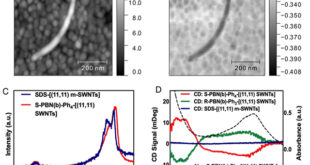Significance
Patients diagnosed with cancer at an early stage have the best chance of curative treatment and long-term survival. Conventional imaging techniques offer noninvasive alternatives, but they are costly when serially used and insensitive to detect subtle invasion, micrometastases, and early stages of cancer formation. There is currently intensive research aimed at developing intra-operative molecular imaging modalities that employ tumor-targeted fluorescent dyes to optically visualize malignant lesions. The research is mainly devoted to developing tumor-activated fluorescent probes and ligand-targeted fluorescent dyes for imaging different types of tumors. Unfortunately, no current dye can produce good quality images in all tumors despite their remarkable tumor-to-background ratios in a few selected tumors.
Cancer-associated fibroblasts (CAFs) are common components of almost all solid tumors and are biologically important in cancer initiation, progression, and metastasis. Targeting CAFs, by altering their numbers, subtype or functionality, is being explored as an avenue to improve cancer therapies and early diagnosis. Besides infiltrating nearly all solid tumors, CAFs can be easily distinguished from fibroblasts in healthy tissues based on their expression of fibroblast activation protein alpha (FAP), which is expressed in more than 90% of cancers. Nevertheless, while most FAP-targeted near-infrared dyes exhibit good tumor uptake, some suffer from short tumor retention times and most are compromised by the unwanted accumulation in healthy tissues, a big obstacle to their widespread applications.
To overcome these limitations, Purdue University researchers: Dr. Ramesh Mukkamala, Dr. Spencer Lindeman, Dr. Kate Kragness, Mr. Imrul Shahriar, Dr. Madduri Srinivasarao and led by Professor Philip Low developed a new FAP-targeted fluorescent dye for robust and efficient fluorescence-guided imaging and surgery of solid tumors. The design and characterization of FAP-targeted pan-cancer imaging agent were discussed. The objective of their study was to develop and improve the intra-operative visualization and resection of occult malignant lesions with the ultimate goal of improving patients’ survival chances. The work is published in the Journal of Materials Chemistry B.
The research team reported the design and synthesis of a novel FAP-targeted near-infrared dye (FTL-S-S0456) with affinity (12 nM) and specificity (5000-fold over related proteins) for FAP, and negligible uptake in healthy tissues. According to the authors, the fluorescence dye was observed to concentrate in all seven sold tumor types examined and yield fluorescence images with excellent tumor-to-background ratios. The bright fluorescence remained in the tumor tissue for several days following the administration and showed not unwanted accumulation in the healthy fibroblasts and healthy cells.
In summary, a novel FTL-S-S0456 is successfully designed to image most malignant solid tumors by binding to cancer-associated fibroblasts but not healthy cells. Recently, the US Food and Drug Administration (FDA) approved a folate-targeted S0456 conjugate that allows visualization of lesions hard to detect in 27% of ovarian cancer patients. In this regard, the researchers believe that the resulting fluorophore attached to FTL-S-S0456 would also detect occult lesions when concentrated by the receptor-mediated update in such lesions. In a statement to Advances in Engineering, Distinguished Professor Philip Low, the lead and corresponding author said that the design of novel FAP-targeted fluorescent dye would advance the clinical translation of pan-cancer near-infrared fluorescence imaging agents and its use for robust and efficient surgery of various solid tumors. Indeed, this new technology should potentially enhance the surgeon’s ability to identify cancer during oncologic resection and potentially improve long-term outcomes.
Reference
Mukkamala, R., Lindeman, S., Kragness, K., Shahriar, I., Srinivasarao, M., & Low, P. (2022). Design and characterization of fibroblast activation protein targeted pan-cancer imaging agent for fluorescence-guided surgery of solid tumors. Journal of Materials Chemistry B, 10(12), 2038-2046.
 Advances in Engineering Advances in Engineering features breaking research judged by Advances in Engineering advisory team to be of key importance in the Engineering field. Papers are selected from over 10,000 published each week from most peer reviewed journals.
Advances in Engineering Advances in Engineering features breaking research judged by Advances in Engineering advisory team to be of key importance in the Engineering field. Papers are selected from over 10,000 published each week from most peer reviewed journals.


